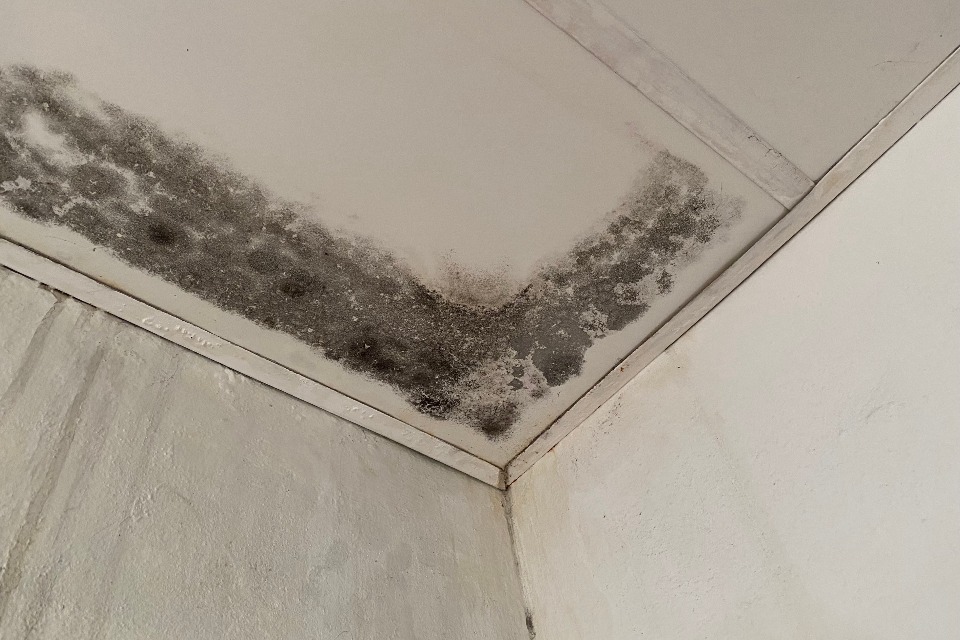Latest update
Thursday 6 February 2025
In week 5
- influenza (flu) activity overall decreased across most indicators and was at medium activity levels – there continues to be an increase in influenza B across some indicators
- COVID-19 activity remained stable across most indicators and was at baseline activity levels
- respiratory syncytial virus (RSV) activity decreased across most indicators and was circulating at low levels overall
For more information see the flu, COVID-19 and RSV surveillance report and norovirus surveillance report.
Flu surveillance data
In week 5
- flu activity overall decreased across most indicators and was at medium activity levels – there continues to be an increase in influenza B across some indicators
- flu positivity decreased with a weekly mean positivity rate of 14%, compared to 15.6% in the previous week, this is based on a percentage of people who test positive among those with symptoms tested
- overall, flu hospitalisations decreased slightly to 6.40 per 100,000 population, compared with 7.00 per 100,000 in the previous week
- in week 5, the weekly influenza-like illnesses (ILI) General Practice (GP) consultation rate decreased to 13.9 per 100,000 compared with 15.4 per 100,000 in the previous week
- reporting of the weekly influenza vaccine uptake for the 2024 to 2025 season concluded last week
- up to the end of week 4 (week ending 26 January 2025), vaccine uptake was 39.7% for those under 65 years in a clinical risk group, 34.8% in all pregnant women and 74.6% for all those aged 65 years and over
- uptake was 41.4% for children aged 2 years of age and 43.2% for children aged 3 years of age
COVID-19 surveillance data
In week 5
- COVID-19 activity remained stable across most indicators and was at baseline activity levels
- COVID-19 positivity in hospital settings remained stable with a weekly mean positivity rate of 2.5% compared with 2.4% in the previous week
- COVID-19 hospitalisations remained stable at 1.15 per 100,000 compared to 1.12 per 100,000 in the previous week
- COVID-19 ICU admissions remained stable at 0.03 per 100,000 compared with 0.03 per 100,000 in the previous week
- there were 9 COVID-19 acute respiratory incidents reported in week 4
- the highest hospital admission rate was in the North-West, which increased to 1.79 per 100,00 compared with 1.36 per 100,000 in the previous week
- those aged 85 years and over had the highest hospital admission rate, which increased to 13.84 per 100,000 compared with 11.78 per 100,000 in the previous week
- up to the end of week 5 (week ending 2 February 2025), 23.6% of those under 65 years in a clinical risk group and 59.3% of all people aged over 65 years old, who are living and resident in England had been vaccinated
Respiratory syncytial virus (RSV) surveillance data
In week 5
- respiratory syncytial virus (RSV) activity decreased across most indicators and was circulating at low levels overall
- emergency department attendances for acute bronchiolitis remained stable
- RSV positivity decreased to 2.5% compared with 3.9% in the previous week
- overall, hospital admissions decreased to 1.06 per 100,000 compared with 1.42 per 100,000 in the previous week
UKHSA monitors Human metapneumovirus (hMPV) detections in patients seen in GP practices or tested by hospital laboratories and reports on this in the weekly surveillance report.
hMPV is a common respiratory infection in winter and current levels are expected at this time of year. Infections are usually mild, causing symptoms of a common cold. Most people have had hMPV by the time they are five years old and catch it again throughout their lives. In week 5, hMPV laboratory test positivity increased slightly to 4.2% from 3.8% in the previous week.
Dr Alexander Allen, Consultant Epidemiologist at UKHSA, said
We’re pleased to see that the downward trend in flu activity has continued into this week.
If you have already had your flu vaccine this season, you can be reassured that the vaccine offers the best defence and protects against multiple strains. The predominant circulating flu strain continues to be A H1N1 clade 5a.2a. and the flu vaccine is well matched.
If you’re eligible and haven’t yet had your flu vaccine, it’s important that you take this offer up if available through local services. This includes anyone recently pregnant or newly diagnosed as in an eligible clinical risk group.
If you have symptoms of flu or COVID-19 such as a high temperature, cough and feeling tired and achy, try to limit your contact with others, especially those who are vulnerable. If you have symptoms and need to leave the house, our advice remains that you should consider wearing a face covering. Washing hands regularly and using and disposing tissues in bins can reduce the spread of respiratory illnesses, as can ensuring that indoor areas are well ventilated.
Norovirus surveillance data
In week 4
- norovirus reports in the 2-week period between 13 January 2025 to 26 January 2025 were 15% higher than the previous 2-week period
- the total number of reports was 114.5% higher than the 5-season average for the same 2-week period – reporting remained highest in adults aged 65 years and over
- rotavirus reporting increased in recent weeks but was within expected levels during the 2-week period of weeks 3 and 4 of 2025
- the number of norovirus outbreaks reported to the Hospital Norovirus Outbreak Reporting System (HNORS) since the start of the 2024/2025 season is 15.8% higher than the 5-season average
- while some of the increased reporting may be attributable to the increased use of PCR multiplex technology (capable of detecting multiple gastrointestinal pathogens in one test), it is likely that the emergence of an unusual norovirus genotype, GII.17, as well as changes in the epidemiology following the COVID-19 pandemic and other factors are contributing to the observed rise
- during the 2024/2025 season to date, the majority (90.7%) of samples characterised were norovirus genogroup 2 (GII), of which the most frequently identified genotype was GII.17 (55.4%), an increase of this genotype has also been observed in other counties during 2024 and is being closely monitored – at present there is no indication it leads to more severe illness (note it isn’t accurate to refer to GII.17 as ‘Kawasaki’ and this term is causing confusion with Kawasaki Disease, which is an unrelated disease)
- laboratory reports represent just a small proportion of total norovirus cases and it has been estimated that for every case of norovirus reported to national surveillance in the UK there are about 288 in the community that go unreported, representing an annual burden of around 3 million cases
- norovirus symptoms include nausea, vomiting and diarrhoea but can also include a high temperature, abdominal pain and aching limbs
- norovirus infections can cause dehydration, especially in vulnerable groups such as young children and older or immunocompromised people, so if you do get ill it is important to drink plenty of fluids during that time
Amy Douglas, Epidemiologist at UKHSA said
Norovirus cases are way above what we would usually see at this time of year and outbreaks in hospitals continue to rise. Just because you’ve had norovirus doesn’t mean you won’t get it again.
It’s really important that if you have diarrhoea and vomiting, you take steps to avoid passing the infection on, including not visiting people in hospitals and care homes.
Do not return to work, school or nursery until 48 hours after your symptoms have stopped and don’t prepare food for others in that time either. This is because you can still pass on the virus in the days after you stop being sick.
Washing your hands with soap and warm water and using bleach-based products to clean surfaces will also help stop infections from spreading. Alcohol gels do not kill norovirus so don’t rely on these alone.
Norovirus infections can cause dehydration, especially in vulnerable groups such as young children and older or immunocompromised people, so if you do get ill it is important to drink plenty of fluids during that time.
Washing your hands with soap and warm water and using bleach-based products to clean surfaces will also help stop infections from spreading. Alcohol gels do not kill norovirus so don’t rely on these alone.
Previous
Thursday 30 January 2025
This bulletin (formally Weekly Winter Briefing) brings together the latest surveillance data, along with the latest public health advice for flu, COVID-19, RSV and other viruses common in winter.
In week 4
- influenza activity overall decreased across most indicators and was at medium activity levels – there continues to be an increase in influenza B across some indicators
- COVID-19 activity remained stable across most indicators and was at baseline activity levels
- respiratory syncytial virus (RSV) activity showed a mixed picture and was circulating at low levels overall
For more information see the flu, COVID-19 and RSV surveillance report and norovirus surveillance report.
Flu surveillance data for week 4
- Flu activity overall decreased across most indicators and was at medium activity levels. There continues to be an increase in influenza B across some indicators.
- Flu positivity decreased with a weekly mean positivity rate of 15.6%, compared to 27.4% in the previous week. This is based on a percentage of people who test positive among those with symptoms tested.
- Overall, flu hospitalisations decreased to 7.13 per 100,000 population, compared with 8.51 per 100,000 in the previous week.
- For primary care surveillance, due to a technical issue in processing the data, the influenza-like-illness (ILI) consultations indicator has not been updated this week. In week 3, the weekly ILI General Practice (GP) consultation rate decreased to 17 per 100,000 compared with 23.1 per 100,000 in the previous week.
- Up to the end of week 4 (week ending 26 January 2025), vaccine uptake was 39.7% for those under 65 years in a clinical risk group, 34.8% in all pregnant women and 74.6% for all those aged 65 years and over. Uptake was 41.4% for children aged 2 years of age and 43.2% for children aged 3 years of age.
COVID-19 surveillance data for week 4
- COVID-19 activity remained stable across most indicators and was at baseline activity levels.
- COVID-19 positivity in hospital settings remained stable with a weekly mean positivity rate of 2.4% compared with 2.4% in the previous week.
- COVID-19 hospitalisations decreased to 1.13 per 100,000 compared to 1.33 per 100,000 in the previous week.
- COVID-19 ICU admissions remained stable at 0.03 per 100,000 compared with 0.05 per 100,000 in the previous week.
- There were 11 COVID-19 acute respiratory incidents reported in week 4.
- The highest hospital admission rate was in the North-East, which decreased to 2.37 per 100,00 compared with 2.74 per 100,000 in the previous week.
- Those aged 85 years and over had the highest hospital admission rate, which decreased to 11.86 per 100,000 compared with 15.14 per 100,000 in the previous week.
- Up to the end of week 4 (week ending 26 January 2025), 23.6% of those under 65 years in a clinical risk group and 59.3% of all people aged over 65 years old, who are living and resident in England had been vaccinated.
Respiratory syncytial virus (RSV) surveillance data for week 4
- Respiratory syncytial virus (RSV) activity showed a mixed picture and was circulating at low levels overall.
- Emergency department attendances for acute bronchiolitis remained stable.
- RSV positivity decreased slightly to 3.8% compared with 4.2% in the previous week.
- Overall, hospital admissions increased to 1.42 per 100,000 compared with 1.20 per 100,000 in the previous week.
- UKHSA monitors Human metapneumovirus (hMPV) detections in patients seen in GP practices or tested by hospital laboratories and reports on this in the weekly surveillance report. hMPV is a common respiratory infection in winter and current levels are expected at this time of year. Infections are usually mild, causing symptoms of a common cold and most people have had hMPV by the time they are five years old and catch it again throughout their lives. In week 4, hMPV laboratory test positivity decreased to 3.9% from 4.5% in the previous week.
Dr Alexander Allen, Consultant Epidemiologist at UKHSA, said
We’re continuing to see flu activity decrease, which is really promising at this stage in the season. People are still reminded to take protective measures to ensure we keep cases down as we have seen a recent increase in cases of influenza B amongst children, although this is to be expected at this time of year.
The vaccine offers the best defence against flu and protects against multiple flu strains, including B strains. The predominant circulating flu strain continues to be A H1N1 clade 5a.2a. Analysis by UKHSA laboratory scientists shows that the H1N1 component of the flu vaccine is well matched.
If you’re eligible and have not yet had your flu vaccine, it’s important that you take this offer up if available through local services. This includes anyone recently pregnant or newly diagnosed as in an eligible clinical risk group.
If you have symptoms of flu or COVID-19 such as a high temperature, cough and feeling tired and achy, try to limit your contact with others, especially those who are vulnerable. If you have symptoms and need to leave the house, our advice remains that you should consider wearing a face covering. Washing hands regularly and using and disposing tissues in bins can reduce the spread of respiratory illnesses, as can ensuring that indoor areas are well ventilated.
Norovirus surveillance data for week 3
- Norovirus reports in the 2-week period between 6 January 2025 to 19 January 2025 were 18.3% higher than the previous 2-week period. The total number of reports was 113.3% higher than the 5-season average for the same 2-week period. Reporting remained highest in adults aged 65 years and over.
- Rotavirus reporting has started to increase again in recent weeks but was within expected levels during the 2-week period of weeks 2 and 3 of 2025.
- The number of norovirus outbreaks reported to the Hospital Norovirus Outbreak Reporting System (HNORS) since the start of the 2024/2025 season is 14.3% higher than the 5-season average.
- While some of the increased reporting may be attributable to the increased use of PCR multiplex technology (capable of detecting multiple gastrointestinal pathogens in one test), it is likely that the emergence of an unusual norovirus genotype, GII.17, as well as changes in the epidemiology following the COVID-19 pandemic and other factors are contributing to the observed rise.
- During the 2024/2025 season to date, the majority (90.4%) of samples characterised were norovirus genogroup 2 (GII), of which the most frequently identified genotype was GII.17 (56.3%), an increase of this genotype has also been observed in other counties during 2024 and is being closely monitored — at present there is no indication it leads to more severe illness (note it is not accurate to refer to GII.17 as ‘Kawasaki’ and this term is causing confusion with Kawasaki Disease, which is an unrelated disease)
- Laboratory reports represent just a small proportion of total norovirus cases and it has been estimated that for every case of norovirus reported to national surveillance in the UK there are about 288 in the community that go unreported, representing an annual burden of around 3 million cases.
- Norovirus symptoms include nausea, vomiting and diarrhoea but can also include a high temperature, abdominal pain and aching limbs. Norovirus infections can cause dehydration, especially in vulnerable groups such as young children and older or immunocompromised people, so if you do get ill it is important to drink plenty of fluids during that time.
Amy Douglas, Epidemiologist at UKHSA said
Norovirus cases are over double what we would usually see at this time of year. This isn’t just unpleasant for those affected – it’s having a big impact on hospitals and care homes.
It’s really important that if you have diarrhoea and vomiting, you take steps to avoid passing the infection on. Please avoid visiting people in hospitals and care homes to prevent passing on the infection in these settings.
Do not return to work, school or nursery until 48 hours after your symptoms have stopped and don’t prepare food for others in that time either. This is because you can still pass on the virus in the days after you stop being sick.
Washing your hands with soap and warm water and using bleach-based products to clean surfaces will also help stop infections from spreading. Alcohol gels do not kill norovirus so do not rely on these alone.
Previous
Thursday 23 January 2025
This bulletin (formally Weekly Winter Briefing) brings together the latest surveillance data, along with the latest public health advice for flu, COVID-19, RSV and other viruses common in winter.
In week 3
- influenza activity overall decreased across most indicators and was at medium activity levels; however, laboratory surveillance indicated an increase in influenza B
- COVID-19 activity remained stable across most indicators and was at baseline activity levels
- respiratory syncytial virus (RSV) activity decreased across most indicators and was circulating at low levels of activity
For more information see the flu, COVID-19 and RSV surveillance report and norovirus surveillance report.
Flu surveillance data for week 3
- Flu activity overall decreased across most indicators and was at medium activity levels. However, laboratory surveillance indicated an increase in influenza B.
- Flu positivity decreased with a weekly mean positivity rate of 17.5%, compared to 21.1% in the previous week. This is based on a percentage of people who test positive among those with symptoms tested.
- Overall, flu hospitalisations decreased to 8.41 per 100,000 population, compared with 9.92 per 100,000 in the previous week.
- The weekly influenza-like illnesses (ILI) general practice (GP) consultation rate decreased to 17 per 100,000 compared with 23.1 per 100,000 in the previous week.
- Up to the end of week 3 (week ending 19 January 2025), vaccine uptake was 39.5% for those aged under 65 years in a clinical risk group, 34.5% in all pregnant women and 74.4% for all those aged 65 years and over. Uptake was 41.2% for children aged 2 years of age and 43% for children aged 3 years of age.
- Some indicators suggested an increase in flu activity in children over the last week, this is in line with an expected increase in respiratory virus activity in children following the post Christmas return to school.
COVID-19 surveillance data for week 3
- COVID-19 activity remained stable across most indicators and was at baseline activity levels.
- COVID-19 positivity in hospital settings increased slightly with a weekly mean positivity rate of 2.4%, compared to 2.2% in the previous week.
- COVID-19 hospitalisations remained stable at 1.32 per 100,000 compared to 1.35 per 100,000 in the previous week.
- COVID-19 ICU admissions remained stable at 0.04 per 100,000 compared with 0.04 per 100,000 in the previous week.
- There were 10 COVID-19 acute respiratory incidents reported in week 3.
- The highest hospital admission rate was in the North-East, which remained stable at 2.74 per 100,000, compared with 2.78 per 100,000 in the previous week.
- Those aged 85 years and over had the highest hospital admission rate, which decreased slightly to 14.65 per 100,000 compared with 15.45 per 100,000 in the previous week.
- Up to the end of week 3 (week ending 19 January 2025), 23.6% of those under 65 years in a clinical risk group and 59.3% of all people aged over 65 years old, who are living and resident in England had been vaccinated.
Respiratory syncytial virus (RSV) surveillance data for week 3
- Respiratory syncytial virus (RSV) activity decreased across most indicators and was circulating at low levels overall.
- Emergency department attendances for acute bronchiolitis increased.
- RSV positivity decreased slightly to 4.2% compared with 4.7% in the previous week.
- Overall, hospital admissions decreased to 1.21 per 100,000 compared with 1.57 per 100,000 in the previous week.
- UKHSA monitors Human metapneumovirus (hMPV) detections in patients seen in GP practices or tested by hospital laboratories and reports on this in the weekly surveillance report. Most people have had hMPV by the time they are 5 years old and catch it again throughout their lives. In week 3, Human metapneumovirus (hMPV) laboratory test positivity increased to 4.9% from 3.5% in the previous week.
Dr Jamie Lopez Bernal, Consultant Epidemiologist at UKHSA, said
It’s encouraging that flu activity is continuing to decrease this week and is currently circulating at medium levels. Flu positivity has decreased by 3.6% this week, but we should remember that flu season is not over yet and people should continue to take protective measures to keep us on this downward trend.
We’re monitoring a slight increase in Influenza B positivity this week, which is to be expected towards the end of winter and the vaccine protects against multiple flu strains, including B. The predominant circulating flu strain continues to be A H1N1 clade 5a.2a. Analysis by UKHSA laboratory scientists shows that the H1N1 component of the flu vaccine is well matched.
If you’re eligible and have not yet had your flu vaccine, it’s important that you take this offer up if available through local services. This includes anyone recently pregnant or newly diagnosed as in an eligible clinical risk group.
If you have symptoms of flu or COVID-19 such as a high temperature, cough and feeling tired and achy, try to limit your contact with others, especially those who are vulnerable. If you have symptoms and need to leave the house, our advice remains that you should consider wearing a face covering. Washing hands regularly and using and disposing tissues in bins can reduce the spread of respiratory illnesses.
Norovirus surveillance data for week 2
- Norovirus reports in the 2-week period between 30 December 2024 to 12 January 2025 were 12% higher than the previous 2-week period. The total number of reports was 89.8% higher than the 5-season average for the same 2-week period.
- Rotavirus reporting has started to increase again in recent weeks but was within expected levels during the 2-week period of weeks 1 and 2 of 2025.
- The number of norovirus outbreaks reported to the Hospital Norovirus Outbreak Reporting System (HNORS) since the start of the 2024/2025 season is 7.2% higher than the 5-season average.
- During weeks 1 and 2 of 2025, reporting remained highest in adults aged 65 years and over.
- While some of the increased reporting may be attributable to the increased use of PCR multiplex technology (capable of detecting multiple gastrointestinal pathogens in one test), it is likely that the emergence of an unusual norovirus genotype, GII.17, as well as changes in the epidemiology following the COVID-19 pandemic and other factors are contributing to the observed rise.
- During the 2024/2025 season to date, the majority (90.5%) of samples characterised were norovirus genogroup 2 (GII), of which the most frequently identified genotype was GII.17 (58%), an increase of this genotype has also been observed in other counties during 2024 and is being closely monitored — at present there is no indication it leads to more severe illness (note it isn’t accurate to refer to GII.17 as ‘Kawasaki’ and this term is causing confusion with Kawasaki Disease, which is an unrelated disease).
- Laboratory reports represent just a small proportion of total norovirus cases and it has been estimated that for every case of norovirus reported to national surveillance in the UK there are about 288 in the community that go unreported, representing an annual burden of around 3 million cases.
- Norovirus symptoms include nausea, vomiting and diarrhoea but can also include a high temperature, abdominal pain and aching limbs. Norovirus infections can cause dehydration, especially in vulnerable groups such as young children and older or immunocompromised people, so if you do get ill it is important to drink plenty of fluids during that time.
Amy Douglas, Epidemiologist at UKHSA said
Norovirus activity has remained high in recent weeks and has started to increase again, as we expected following the post-Christmas return to school and work.
If you have diarrhoea and vomiting, you can take steps to avoid passing the infection on. Do not return to work, school or nursery until 48 hours after your symptoms have stopped and do not prepare food for others in that time either. If you are unwell, avoid visiting people in hospitals and care homes to prevent passing on the infection in these settings. Washing your hands with soap and warm water and using bleach-based products to clean surfaces will also help stop infections from spreading. Alcohol gels do not kill norovirus so do not rely on these alone.
Previous
Thursday 16 January 2025
This bulletin (formally Weekly Winter Briefing) brings together the latest surveillance data, along with the latest public health advice for flu, COVID-19, RSV and other viruses common in winter.
In week 2
- influenza (flu) activity showed a mixed picture with some recent decline, and was circulating at medium levels
- COVID-19 activity remained stable across most indicators and was at baseline activity levels
- Respiratory syncytial virus (RSV) activity decreased across most indicators and was circulating at low levels of activity
For more information, see the flu, COVID-19 and RSV surveillance report and norovirus surveillance report.
Flu surveillance data for week 2
- Flu activity showed a mixed picture with some indicators suggesting that activity may have reached a peak, and declined in recent weeks to medium levels
- Flu positivity decreased with a weekly mean positivity rate of 20.9%, compared to 28.4% in the previous week (this is based on a percentage of people who test positive among those with symptoms tested)
- Overall, flu hospitalisations decreased to medium levels of 9.47 per 100,000 population, compared with 13.43 per 100,000 in the previous week.
- The weekly influenza-like illnesses (ILI) General Practice (GP) consultation rate increased to 23.1 per 100,000 compared with 20.6 per 100,000 in the previous week. Note that this is not considered to indicate rising activity as it follows two weeks with bank holidays, in which the number of GP appointments available was reduced
- Up to the end of week 2 (week ending 12 January 2025), vaccine uptake stood at 39.1% of those under 65 years in a clinical risk group, 34.2% in all pregnant women and 74.1% in all those aged 65 years and over, 41.1% of children aged 2 years of age and 42.7% of children aged 3 years of age have been vaccinated
COVID-19 surveillance data for week 2
- COVID-19 activity remained stable across most indicators and was circulating at baseline levels
- COVID-19 positivity in hospital settings decreased slightly with a weekly mean positivity rate of 2.1%, compared to 2.3% in the previous week
- COVID-19 hospitalisations remained stable at 1.34 per 100,000 compared to 1.39 per 100,000 in the previous week
- COVID-19 ICU admissions remained stable at 0.04 per 100,000 compared with 0.06 per 100,000 in the previous week
- There were 8 COVID-19 acute respiratory incidents reported in week 2
- The highest hospital admission rate was in the North-East, which remained stable at 2.74 per 100,000, compared with 2.78 per 100,000 in the previous week
- Those aged 85 years and over had the highest hospital admission rate, which remained stable at 15.47 per 100,000 compared with 15.13 per 100,000 in the previous week
- Up to the end of week 2 (week ending 12 January 2025), 23.6% of those under 65 years in a clinical risk group and 59.2% of all people aged over 65 years old, who are living and resident in England had been vaccinated
Respiratory Syncytial Virus (RSV) surveillance data for week 2
- Respiratory syncytial virus (RSV) activity decreased across most indicators and was circulating at low levels overall
- Emergency department attendances for acute bronchiolitis decreased
- RSV positivity decreased to 4.7% compared with 6.2% in the previous week
-
Overall, hospital admissions decreased to 1.52 per 100,000 compared with 2.10 per 100,000 in the previous week
- UKHSA monitors Human metapneumovirus (hMPV) detections in patients seen in GP practices or tested by hospital laboratories and reports on this in the weekly surveillance report. Most people have had hMPV by the time they are five years old and catch it again throughout their lives. In week 2, Human metapneumovirus (hMPV) laboratory test positivity decreased to 3.5% from 4.6% in the previous week
Dr Conall Watson, Consultant Epidemiologist at UKHSA, said
Flu activity is currently heading in the right direction, falling from high to medium levels overall this week. One of our key indicators is the percentage of positive flu tests, and this has come down from 28% to 21%. This is promising but we are nowhere near out of flu season yet. Mixing increases in January as people return to workplaces and schools which increases the chances for flu viruses to spread.
We urge everyone to do their bit to keep us on this downward trend. If you have symptoms of flu or COVID-19 such as a high temperature, cough and feeling tired and achy, try to limit your contact with others, especially those who are vulnerable. If you have symptoms and need to leave the house, our advice remains that you should consider wearing a face covering. Washing hands regularly and using and disposing tissues in bins can reduce the spread of respiratory illnesses.
If you’re eligible and haven’t yet had your flu vaccine, it’s important that you take this offer up if available through local services. This includes anyone recently pregnant or newly diagnosed as in an eligible clinical risk group.
The vaccine protects against multiple flu strains and we are monitoring influenza type B activity closely as this can rise towards the end of winter. The predominant circulating flu strain continues to be A H1N1 clade 5a.2a. Analysis by UKHSA laboratory scientists shows that the H1N1 component of the flu vaccine is well matched.
Norovirus surveillance data for week 1
- Norovirus reports in the 2-week period between 23 December to 05 January 2024 were 6.7% lower than the previous 2-week period, although have increased in week 1 of 2025.
- The decrease over the festive period has also been seen in previous years should be interpreted with caution as likely reflects changes in patterns of healthcare use, social mixing and lagged reporting due to the Christmas holidays, as well as the impact of school holidays. However, the total number of reports was 70.1% higher than the 5-season average for the same 2-week period.
- Rotavirus reporting has decreased in recent weeks and was within expected levels during the 2-week period of weeks 52 of 2024 and 1 of 2025.
- The number of norovirus outbreaks reported to the Hospital Norovirus Outbreak Reporting System (HNORS) since the start of the 2024/2025 season is 8.7% higher than the 5-season average.
- Norovirus reporting remained high across all regions of England and all age groups, with the highest number of reports in adults aged 65 years and over.
- While some of the increased reporting may be attributable to the increased use of PCR multiplex technology (capable of detecting multiple gastrointestinal pathogens in one test), it is likely that the emergence of an unusual norovirus genotype, GII.17, as well as changes in the epidemiology following the COVID-19 pandemic and other factors are contributing to the observed rise.
- During the 2024/2025 season to date, the majority (90.4%) of samples characterised were norovirus genogroup 2 (GII), of which the most frequently identified genotype was GII.17 (58.1%), an increase of this genotype has also been observed in other counties during 2024 and is being closely monitored — at present there is no indication it leads to more severe illness (note it isn’t accurate to refer to GII.17 as ‘Kawasaki’ and this term is causing confusion with Kawasaki Disease, which is an unrelated disease)
- Laboratory reports represent just a small proportion of total norovirus cases and it has been estimated that for every case of norovirus reported to national surveillance in the UK there are about 288 in the community that go unreported, representing an annual burden of around 3 million cases.
- Norovirus symptoms include nausea, vomiting and diarrhoea but can also include a high temperature, abdominal pain and aching limbs. Norovirus infections can cause dehydration, especially in vulnerable groups such as young children and older or immunocompromised people, so if you do get ill it is important to drink plenty of fluids during that time.
Amy Douglas, Epidemiologist at UKHSA said
Norovirus activity remains high.
If you have diarrhoea and vomiting, you can take steps to avoid passing the infection on. Do not return to work, school or nursery until 48 hours after your symptoms have stopped and don’t prepare food for others in that time either. If you are unwell, avoid visiting people in hospitals and care homes to prevent passing on the infection in these settings.
>
Washing your hands with soap and warm water and using bleach-based products to clean surfaces will also help stop infections from spreading. Alcohol gels do not kill norovirus so don’t rely on these alone.
Previous
Thursday 09 January 2025
This bulletin (formally Weekly Winter Briefing) brings together the latest surveillance data, along with the latest public health advice for flu, COVID-19, RSV and other viruses common in winter.
In week 1
- COVID-19 activity remained stable across most indicators and was at baseline activity levels
- influenza (flu) activity showed a mixed picture with some indicators suggesting that activity may have reached a peak, though activity remains at high levels
- Respiratory syncytial virus (RSV) activity decreased across most indicators and was circulating at low levels
For more information, see the flu, COVID-19 and RSV surveillance report and norovirus surveillance report.
Flu surveillance data for week 1
- Flu activity showed a mixed picture with some indicators suggesting that activity may have reached a peak, though activity remains at high levels
- flu positivity decreased slightly with a weekly mean positivity rate of 28.1%, compared to 29.7% in the previous week. This is based on a percentage of people who test positive among those with symptoms tested at sentinel “spotter” laboratories, reported through the Respiratory DataMart surveillance system
- overall, flu hospitalisations remained stable at 13.41 per 100,000, compared with 13.90 per 100,000 in the previous week
- the weekly influenza-like illnesses (ILI) General Practice (GP) consultation rate increased to 20.6 per 100,000 compared with 13.9 per 100,000 in the previous week
- up to the end of week 1, vaccine uptake stood at 38.6% of those under 65 years in a clinical risk group, 33.8% in all pregnant women and 73.8% in all those aged 65 years and over. 40.9% of children aged 2 years of age and 42.5% of children aged 3 years of age have been vaccinated
COVID-19 surveillance data for week 1
- COVID-19 activity remained stable across most indicators and was circulating at baseline levels
- COVID-19 positivity in hospital settings decreased with a weekly mean positivity rate of 2.2%, compared to 2.5% in the previous week
- COVID-19 hospitalisations remained stable at 1.39 per 100,000 compared to 1.32 per 100,000 in the previous week
- COVID-19 ICU admissions remained stable at 0.06 per 100,000 compared with 0.04 per 100,000 in the previous week
- there were 12 COVID-19 acute respiratory incidents reported in week 1
- the highest hospital admission rate was in the North-East at 2.78 per 100,000, increasing from 1.68 per 100,000 in the previous week
- those aged 85 years and over had the highest hospital admission rate, which increased to 15.36 per 100,000 compared with 12.64 per 100,000 in the previous week
- up to the end of week 1, 23.5% of those under 65 years in a clinical risk group and 59.1% of all people aged over 65 years old, who are living and resident in England had been vaccinated
Respiratory syncytial virus (RSV) surveillance data for week 1
- Respiratory syncytial virus (RSV) activity decreased across most indicators and was circulating at low levels overall
- emergency department attendances for acute bronchiolitis decreased
- RSV positivity decreased slightly to 6.2% compared with 7.2% in the previous week
- overall, hospital admissions decreased to 2.14 per 100,000 compared with 2.48 per 100,000 in the previous week
Dr Conall Watson, Consultant Epidemiologist at UKHSA, said
We are continuing to see high levels of flu this week and ongoing admissions to hospitals and intensive care. Although activity has remained stable coming into the new year, influenza activity can be unpredictable as people return to work and school and opportunities for the virus to spread can increase.
The predominant circulating flu strain continues to be A H1N1 clade 5a.2a, and the World Health Organization has so far concluded that the H1 component of the flu vaccine is well matched. If you’re still offered a vaccine through local services, it’s important that you take this up, including if you are pregnant or a health and social care worker.
If you have symptoms of flu or COVID-19 such as a high temperature, cough and feeling tired and achy, try to limit your contact with others, especially those who are vulnerable. If you have symptoms and need to leave the house, our advice remains that you should consider wearing a face covering. Washing hands regularly and using and disposing tissues in bins can reduce the spread of respiratory illnesses.
Norovirus surveillance data for week 52
- Norovirus activity has decreased in recent weeks, with reports in the 2-week period between 16 to 29 December 2024 12.1% lower than the previous 2-week period. The decrease over the festive period has also been seen in previous years and should be interpreted with caution as it likely reflects changes in patterns of healthcare use, social mixing and lagged reporting due to the Christmas holidays, as well as the impact of school holidays. However, the total number of reports was 63.6% higher than the 5-season average for the same 2-week period.
- Rotavirus reporting has decreased in recent weeks and was within expected levels during the 2-week period of weeks 51 and 52.
- The number of norovirus outbreaks reported to the Hospital Norovirus Outbreak Reporting System (HNORS) since the start of the 2024/2025 season is 11.7% higher than the 5-season average.
- Norovirus reporting remained high across all regions of England and all age groups, with the highest number of reports in adults aged 65 years and over.
- While some of the increased reporting may be attributable to the increased use of PCR multiplex technology (capable of detecting multiple gastrointestinal pathogens in one test), it is likely that the emergence of an unusual norovirus genotype, GII.17, as well as changes in the epidemiology following the COVID-19 pandemic and other factors are contributing to the observed high levels.
- During the 2024/2025 season to date, the majority (89.5%) of samples characterised were norovirus genogroup 2 (GII), of which the most frequently identified genotype was GII.17 (59.7%), an increase of this genotype has also been observed in other counties during 2024 and is being closely monitored — at present there is no indication it leads to more severe illness (note it isn’t accurate to refer to GII.17 as ‘Kawasaki’ and this term is causing confusion with Kawasaki Disease, which is an unrelated disease)
- Laboratory reports represent just a small proportion of total norovirus cases and it has been estimated that for every case of norovirus reported to national surveillance in the UK there are about 288 in the community that go unreported, representing an annual burden of around 3 million cases.
- Norovirus symptoms include nausea, vomiting and diarrhoea but can also include a high temperature, abdominal pain and aching limbs. Norovirus infections can cause dehydration, especially in vulnerable groups such as young children and older or immunocompromised people, so if you do get ill it is important to drink plenty of fluids during that time.
Amy Douglas, Epidemiologist at UKHSA, said
Although there was a decrease in reports of norovirus over the festive period, cases still remain high and we expect levels to rise further with the return to school.
If you have diarrhoea and vomiting, you can take steps to avoid passing the infection on. Do not return to work, school or nursery until 48 hours after your symptoms have stopped and don’t prepare food for others in that time either. If you are unwell, avoid visiting people in hospitals and care homes to prevent passing on the infection in these settings.
Washing your hands with soap and warm water and using bleach-based products to clean surfaces will also help stop infections from spreading. Alcohol gels do not kill norovirus so don’t rely on these alone.








